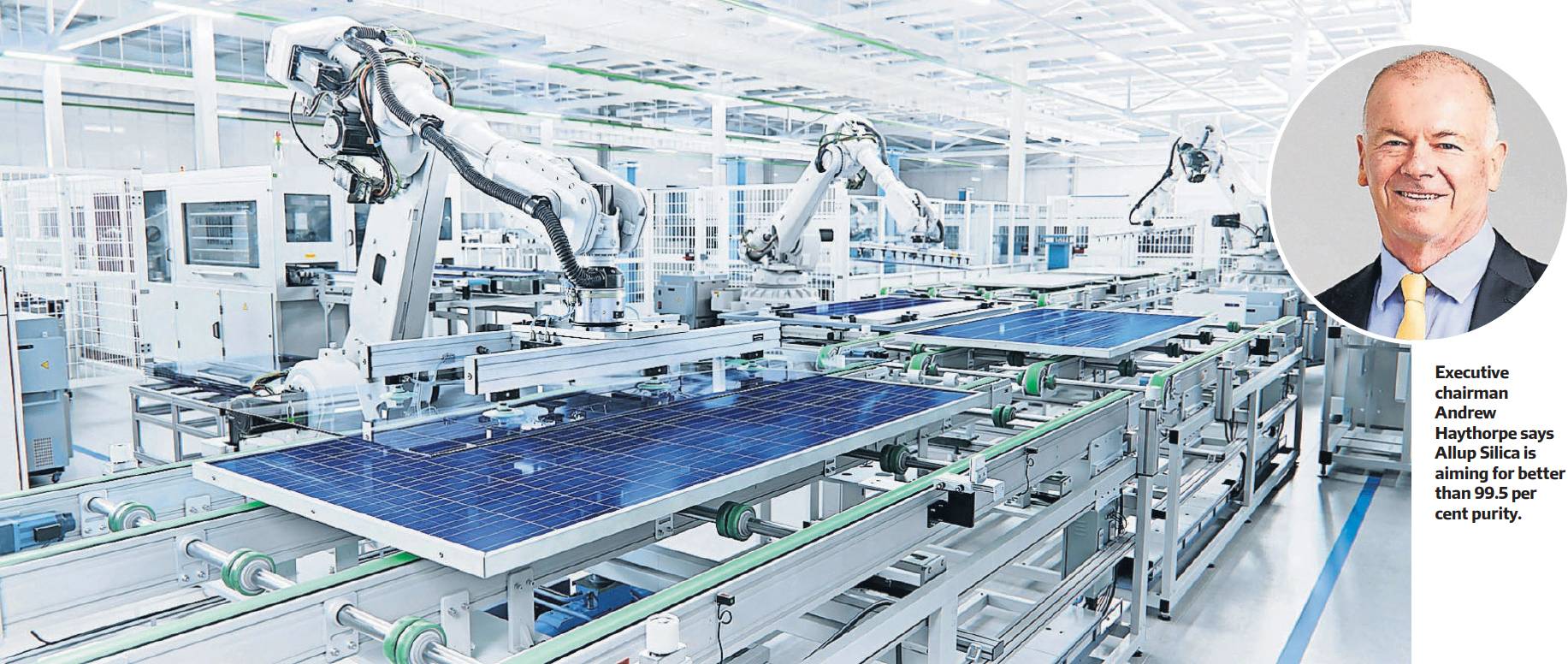Sand in the ground and cash in the bank
In the public eye, sand is perceived as a plentiful and low-value commodity, redolent of vast deserts and sweeping beaches.
But when it comes to the silica-rich variety, nothing could be further than the truth.
Also known as industrial or coarse sands, silica sands have long been used as an aggregate construction material in concrete making and have been a key component of glass for thousands of years.
More recently the sands have been used as a proppant in the hydraulic fracturing method of oil and gas exploration.
But just as oils ain’t oils, not all silica sands are the same, with the level of purity and iron impurities determining their usage.
Higher-grade applications include specialty glass (such as test tubes) and – increasingly – photovoltaic solar panels.
Even higher up the purity scale, silica is deployed in high-fibre cables and mobile phone and computer screens and circuitry.
Currently, silica sands are the most traded commodity by volume in the world, sitting behind only water.
Given the lack of a traded spot market in favour of direct mine-to-customer contracts, pricing is opaque. But according to IMARC Group, the global silica sands market reached $US22.9 billion ($A33 billion) this year and the research house projects it will be worth $US32.1 billion by 2028 (a compound annual growth rate of 5.6 per cent).
Meanwhile, supply is being crimped because most silica sand is sourced from rivers in Asia – often by crude manual methods – and these locations are increasingly becoming environmentally off-limits.
For those wondering, the vast sands of the world’s great deserts are formed by wind rather than water and are unsuitable.
“Silica sands are an essential ingredient for modern society and infrastructure and its many new applications,” says Allup Silica executive chairman Andrew Haythorpe. “But we have got to the critical tipping point where we can no longer rely on previously acceptable – now no longer acceptable – sources of sand.”
With an eye to an increasing supply-demand gap and ratcheting prices, the Perth based Allup Silica is eyeing short-term commercialisation of one or more of its multiple West Australian projects, based around four ports.
The company has also applied for tenements near the Northern Territory town of Larrimah, which would add the Port of Darwin to the mix.
The company has a further two prospective sites in the southern goldfields, near Esperance, and also ground in the north-east, near Wyndham. For the time being the company’s flagship Sparkler is in the state’s south-west, 150 kilometres from the port of Albany – and early indications are promising.
At Sparkler, Allup reports a maiden resource estimate of 70 million tonnes, suitable for high-quality glass making. Updated circuit design processing points to a beneficiated product above the benchmark purity of 99.5 per cent, with low iron impurities.
“Our goal is to clean up our sand and have better than 99.5 per cent purity and less than 100 parts per million iron,” Haythorpe says. “It’s a game of tolerances as to what the manufacturers will put up with, but of course the higher-quality material reaps the best price.”
Haythorpe says the drivers behind a successful silica sands operation are not just volume and purity, but access to cost-effective transport, processing and port facilities.
“Mining is the cheap and easy part; it’s the route to market that becomes significant,” he says. “You can have the world’s best silica sands deposit, but if you can’t ship it and export it, it’s not much good.”
Allup is drilling at Sparkler to better delineate high-purity areas, with a view to sending samples to prospective customers. Any mine is likely to be supported by an arrangement such as an offtake or joint venture agreement.
At its Dune Buggy exploration project near Esperance, Allup is eyeing not just high-quality silica but high-grade calcium carbonate, for use in agriculture as a soil conditioner.
Allup Silica says it also intends to undertake further exploration at its other projects “as soon as possible”.
One of a handful of ASX-listed, pure-play silica sands exposures, Allup listed in May this year after raising $5 million at 20 cents each.
With some $4.5 million still in the bank, Allup is well positioned to fund its staged exploration program and does not expect to have to go to market for more capital. Given the stock is trading not far above cash backing, Haythorpe says Allup is a compelling opportunity for investors to get in on the ground floor.
With high-purity silica demand projected to soar in the next few years, he believes Australia could build a major industry like that of iron ore in the 1960s.
To date, silica has been mined in Australia only in a handful of locations – and mostly out of the public eye.
“The silica market is going through a transformation where the prices for purity are rising – making the mining and exporting of it an exciting opportunity for Australia,” he says.
“There are certainly billions of tonnes of high purity silica out there,’’ Haythorpe adds. ‘‘And over the last 50 years Australians have proven to be very adept at turning various resources into vibrant and viable industries.”
